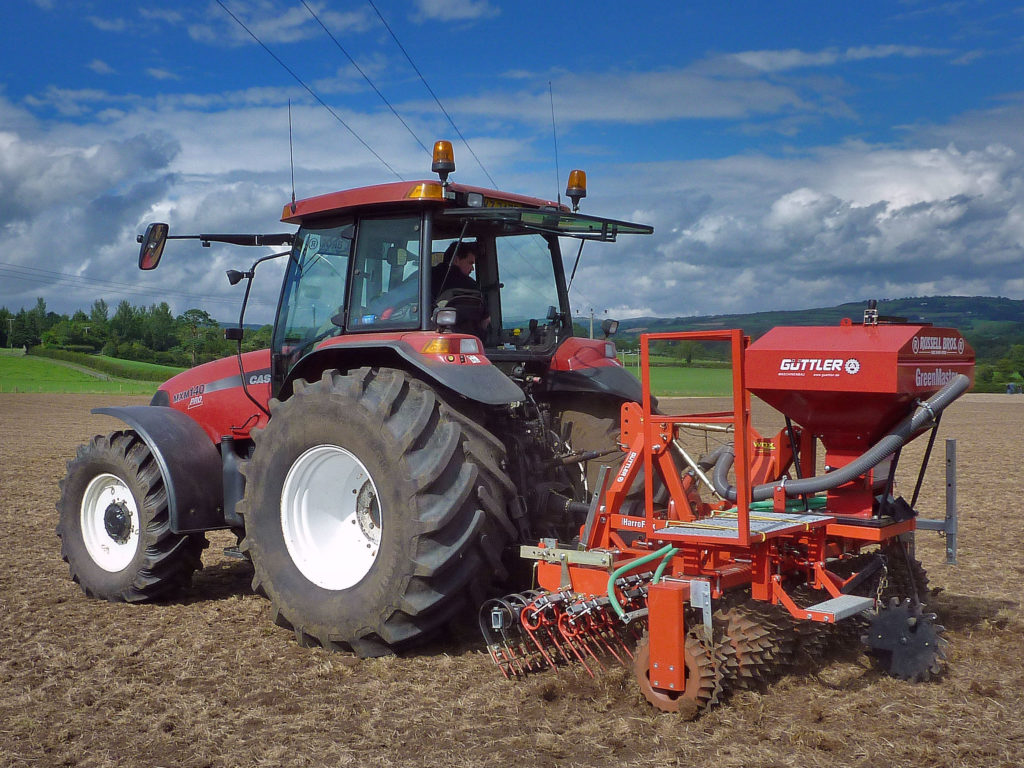Improving sward productivity on Dairy Farms
July 27, 2021
Good quality grass remains the cheapest feed for dairy cows and is the cornerstone of profitable milk production. Christopher Breen, CAFRE Dairying Adviser in Enniskillen, says that “it makes sense to maintain top quality grass swards through regular reseeding. This has been an exceptional year so far to plan for sward improvement with prolonged dry periods. Many farmers have already taken the opportunity to reseed this summer or consider other less expensive forms of rejuvenation to improve productivity. Although only consider taking out swards for improvement where there is enough grass for herd demand during this current dry spell particularly affecting the east of the province”.

Christopher advises that before any sward improvement is made field drainage should be assessed. He asks “are there any wet areas that perhaps need a drain or two, are there open sheughs that need cleaned out or is a more major drainage scheme necessary?” The objective of a field drainage system is to remove excess water from the soil thus improving the conditions for root development and plant growth. Improved drainage will also aid field operations including the harvesting of crops, timeliness of cultivations, earlier turnout of livestock and improved yields. Improving drainage will also allow newly sown grasses to persist for longer.
Before reseeding, soil analysis should be carried out to establish nutrient status and the recommendations for fertiliser and lime. This is critical as the new sward requires a high nutrient status to establish and grow properly. To get an accurate soil analysis it should be taken when no applications of slurry or fertiliser have been made, ideally in the previous three months. Christopher continues that where soils are shown to be too acidic with pH less than 6.0, lime should be applied when reseeding and at regular intervals thereafter. This will help to improve soil structure and drainage, ensure efficient use of fertilisers and minimise invasion of weed grasses.
Very little weed control was achieved last summer due to the continuously wet weather. Grassland weeds compete with grass for nutrients and light and reduce the productivity of the sward. Not only does weed control increase the output of an existing sward, it is an essential pre-requisite for a successful reseed. Spraying with a suitable herbicide should be carried out when growth and weather conditions are suitable. While the existing sward including weeds can be “burned off” with a glyphosate spray prior to reseeding it is more effective to use a selective herbicide for the specific weed problem.
Minimum cultivation techniques
Although ploughing and cultivation is the most expensive method of sward rejuvenation, it is still the most reliable method of establishing a new sward. It also relieves compaction in the topsoil and enables the levelling of uneven or badly poached ground. On flat free draining fields or where stones are a problem minimum cultivation techniques using slot seeding machines or over-seeding machines can be considered.

The use of an over-seeding machine can be a very effective method for sward improvement.
For slot seeding the existing sward can be ‘burned off’ using glyphosate to eliminate competition while the new seeds are germinating. Alternatively the grass seed can be incorporated immediately after a cut of silage before the existing sward has recovered. Where the grass sward is open and has little surface mat then over-seeding is an option. This involves harrowing the existing sward to create a mini-tilth, broadcasting grass seed into this tilth and rolling to provide good contact between soil and grass seed. There is specialised machinery which can carry out these operations in a single pass.
In many cases a field is ploughed and made ready for the grass seed, with a last minute journey to the local merchant to buy grass seed before the rain comes. In order to produce an effective reseed that is going to last for 5 to 10 years, it is important that prior planning is made to determine the seed varieties to be used. Varieties chosen should be suitable for the end use, whether this is silage production or grazing. For silage, consideration should be given to cutting date so that suitable early, intermediate or late heading varieties can be selected. For grazing it should be assessed if early grazing in the spring is a requirement and one or more varieties selected that are suitable.

Minimum cultivation can refresh swards and improve productivity as shown in this grass sward four weeks after direct drilling.
Christopher summarises that “a rejuvenated sward has the potential to produce a high yield of quality grass. Good soil fertility and weed control is essential. Ploughing is the most reliable method of reseeding and will improve uneven or compacted topsoil conditions. Minimum cultivation techniques like slot seeding and over-seeding are less expensive, require less labour and provide a quicker growth response”.
